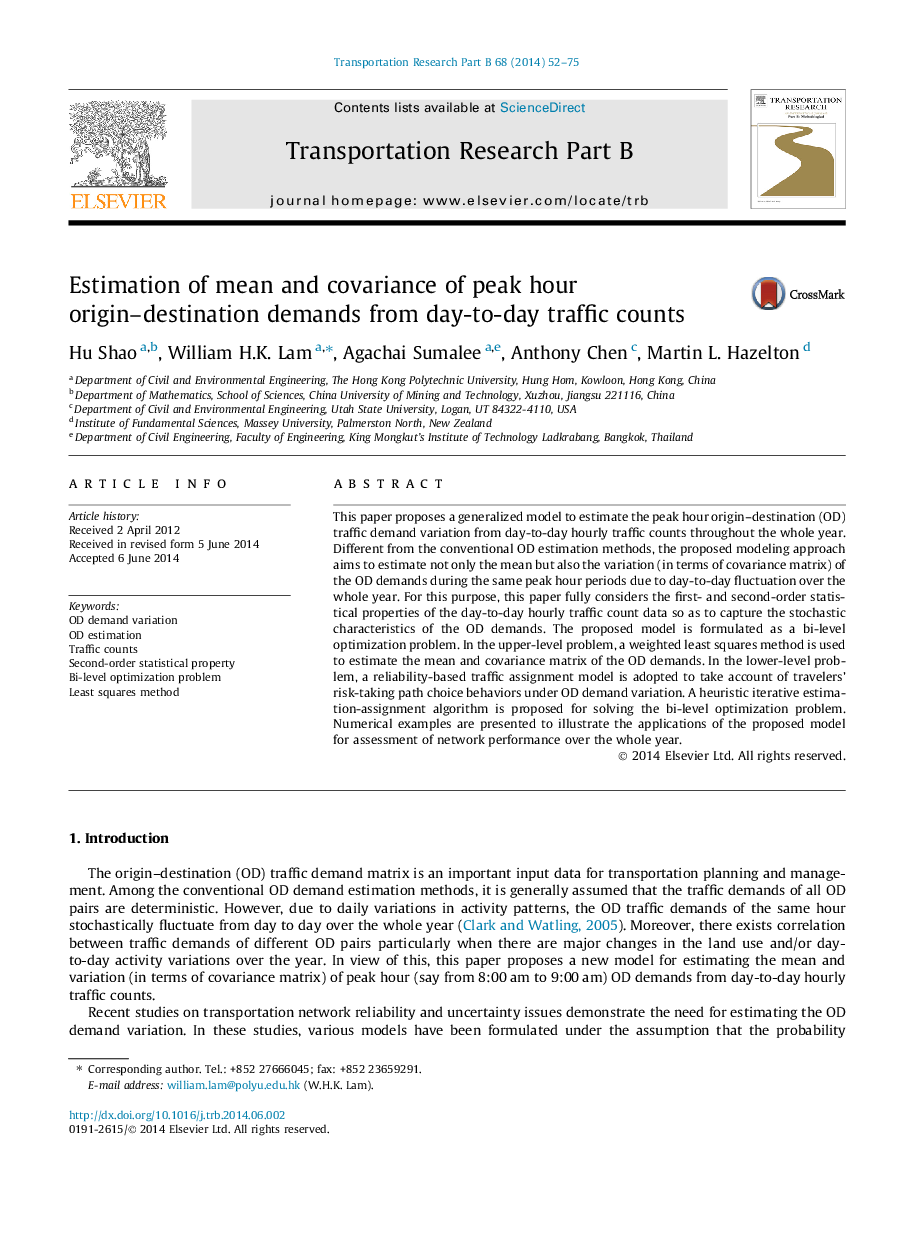| Article ID | Journal | Published Year | Pages | File Type |
|---|---|---|---|---|
| 1131993 | Transportation Research Part B: Methodological | 2014 | 24 Pages |
•Effects of multivariate distribution of OD demands are analytically investigated.•Ignoring OD demand covariance could lead to biased traffic assignment results.•Both first- and second-order statistical properties of observed data are used.•Both mean and covariance of the peak hour OD demands are estimated.•Network performance under uncertainty over the whole year is assessed.
This paper proposes a generalized model to estimate the peak hour origin–destination (OD) traffic demand variation from day-to-day hourly traffic counts throughout the whole year. Different from the conventional OD estimation methods, the proposed modeling approach aims to estimate not only the mean but also the variation (in terms of covariance matrix) of the OD demands during the same peak hour periods due to day-to-day fluctuation over the whole year. For this purpose, this paper fully considers the first- and second-order statistical properties of the day-to-day hourly traffic count data so as to capture the stochastic characteristics of the OD demands. The proposed model is formulated as a bi-level optimization problem. In the upper-level problem, a weighted least squares method is used to estimate the mean and covariance matrix of the OD demands. In the lower-level problem, a reliability-based traffic assignment model is adopted to take account of travelers’ risk-taking path choice behaviors under OD demand variation. A heuristic iterative estimation-assignment algorithm is proposed for solving the bi-level optimization problem. Numerical examples are presented to illustrate the applications of the proposed model for assessment of network performance over the whole year.
